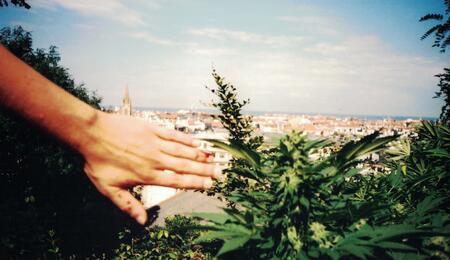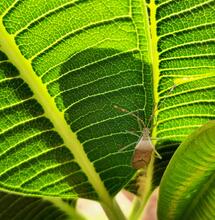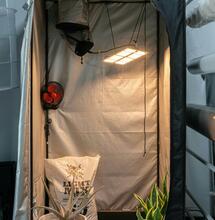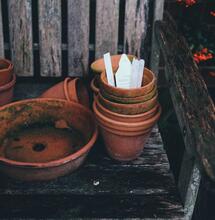The origins of seed banks in Spain

This year is Dinafem’s 15th anniversary. However, to understand how this seed bank was born, we need to go back much further. Its history, in actual fact, begins at the end of the 1980s, in the north of post-Franco Spain, where the cultivation of cannabis was still an unknown activity that very few growers put into practice.
That’s how the first crops were
The first outdoor crops
Among those few were Captain Ozone and Professor OG, at that time, two teenagers intrigued by the cannabis plant, who in 1988 began growing it outdoors. Professor OG, 16 years old and eager to learn, grew cannabis seeds that came from Holland. The advantage in those times was that, since most Spaniards had never seen a marijuana plant, they would not have to worry about someone trying to steal their crops. They started their guerrilla-crop experiments on the outskirts of San Sebastian and also in their own gardens, where all available genetics were grown.
Yon and his initial indoor growing experience
On the other hand, Yon, who was in his early twenties, was taking his first steps in the cultivation of cannabis, not knowing that later on he would become a key player in the creation and development of Dinafem. In the 1980s, this young Basque, who was enthralled by the properties of the marijuana plant and still had to meet Professor OG and Captain Ozone, began his own indoor growing experiments. He had lived in Germany and spoke the language perfectly, which made it easy for him to get in touch with everything that was happening in Holland. At that time, the Netherlands was at the forefront of the world cannabis scene and some of the most advanced cultivation manuals were written in German, the language of its neighbouring country. Let us remember that this is where the hybrid revolution started in the 1980s and where the groundwork for the cannabis industry we know today was laid. In Spain, in contrast, there was hardly any literature on cannabis cultivation, and the little that did exist addressed only very basic concepts, so Yon decided that, if the mountain did not go to Muhammad, Muhammad would go to the mountain. Amsterdam became one of his favourite destinations and, year after year, he went on pilgrimage to the Dutch capital. On one such trip, in the summer of 1987, he decided to visit a club that a friend had recommended, a sort of growers’ association in the old city centre of Amsterdam called Positronics. It was a real discovery, because it was there that he bought his first professional equipment for indoor cultivation, learned a lot and met people who shared his same ideas; people like Mila Jensen, who was testing her first extracts made from what is currently known as the ice-and-water extraction system. He also tasted premium cannabis – savoury seedless buds that were a treat for his palate. After procuring all the cultivation material they could, Yon and his brother returned to Spain with their van stocked with bags of soil, a cultivation lamp and organic fertilisers. Something as simple as organic nutrients for the cultivation of cannabis, which today you can find in any Grow Shop, simply did not exist in Spain. This intrepid grower was a visionary ahead of his time and realised something that has taken decades to sink into the consciousness of many cannabis growers; growing cannabis organically was better for the plant and for consumers, because the final product is of higher quality and free of toxic substances. Because of his visit to Positronics, Yon was able to develop his first semi-organic indoor crop. From then on, he decided to devote himself to his passion, quit his job in the hotel business and started growing marijuana. He was convinced that one day the culture of cannabis and its medical uses would stop being a taboo subject relegated to underground circles.
The UK, a school for Professor OG
For his part, Professor OG, who lived in the same city as Yon in northern Spain (although they did not yet know each other), also understood that the time had come to see the world. In 1991, already in his twenties, he decided to move to London, where he met an East End dealer who provided him with high-quality buds and explained to him that there were several growers in London who produced good buds, and if he wanted to find out more he should go to the Compendium bookshop in Candem Town. This is how Professor OG found a full library of handbooks on cannabis genetics and cultivation – focusing on every aspect that any grower would want to know – and his life changed. These books included, among others Marijuana Botany by Robert Clark, Marijuana Chemistry by Michael Stark, Marijuana Grower’s Handbook by Ed Rosenthal. By reading all these US manuals over and over again, he inadvertently became an expert on the subject. In 1991, the culture of cannabis was still very precarious in general or virtually inexistent. In one of these papers, he found a piece of information that would later turn his career around, the very first reference to feminised seeds; he then realised that there could be the possibility of producing seeds generating female offspring.
Amsterdam: Welcome to the future
After the London experience, Professor OG decided that Amsterdam was the next step. He moved there in 1992 and a new world opened up before his eyes. At that time, the Coffee Shop fever was in full swing. Holland had created a revolutionary legal framework for cannabis, which had turned the country into the promised land of breeders, growers and users. So, when Professor OG arrived in the Dutch capital, he found the same scenario that had fascinated Yon: a fledgling industry that had professionalised the production and distribution of cannabis. Most importantly, he focused on new hybrids that had been created by, e.g., Wernard Bruining and breeders from California such as Old Ed, who had moved to Amsterdam to work on creating and stabilising strains like Haze. His stay in the Netherlands allowed him to learn more about indoor production methods. There were grow-shops where you could buy all the necessary professional materials, e.g. sodium lamps, hydroponic systems, high density methods, fluorescent lamps for the production of clones, climate control systems, organic fertilisers, etc. He also had access to good-quality cannabis. Just as Yon had done, Professor OG visited Positronics, which was a pioneer store at the time, and there he felt like a child at Disneyland. Here, growers could buy clones, see mother plants and taste the final product – otherwise said, they could gain experience of the whole cycle. In addition, all kinds of materials for professional cultivation were on sale and consumers could also buy internally made lighting systems with 400 W, 600 W and even 1000 W lamps. That was the future that Professor OG discovered in 1992 in Amsterdam: professionalism, quality, transparency and legal cultivation. He understood that the passion that had driven him to a sector still in the shadows in the rest of the planet could actually become a real industry. Clearly, at that time, there was not a single feminised seed in the Netherlands. The use of feminised seeds was not even considered. Plants were not even grown from seeds as the great innovation in production was the use of clones, which ensured stability, consistency and quality.
Back home: The Basque Country, the garden of Spain
In 1993, when Professor OG returned to Spain, he started to apply what he had learned in his travels. He planted various outdoor crops, including many guerrilla crops on the outskirts of his town, which he ran with the help of his friends. He committed himself, body and soul, to his passion from spring to autumn and he always used high-quality seeds from Holland grown with organic fertilisers specifically produced for cannabis. His harvests were something never seen before in Spain: high quality seedless buds with a smell and power that were by no means inferior to those of the Netherlands, the only difference being that plants were grown outdoors. Using those very potent genetics that had contributed to create and stabilise the Dutch hybrids, and the lessons learnt about cannabis cultivation, his buds gave rise to a cannabis revolution. “I grew absolutely all the strains available in the catalogues at that time - many Skunk#1 and Skunk series, which were the predecessors of Critical. They were cheap, potent, fast and high-yielding plants with an intense aroma. I remember strains like Early Skunk and Shiva Skunk, which was a cross of Northern Lights x Skunk. We also started to use sativas: Northern Lights#5 x Haze...”, remembers Professor OG. In turn, other growers began to take an interest in this new method of production. Professor OG taught them basic concepts to start with small crops, and so, little by little, a small circle of expert cannabis growers started to form in the town of San Sebastian. These were the years when home growing started in Spain, the beginning of a movement that later gained strength and changed forever the local cannabis scene. The country evolved from an importer and consumer of Moroccan hash to being the main marijuana garden in Europe.
Yon and Professor OG: Cannabis love at first sight
For his part, Yon had also returned from Amsterdam and set to work with his indoor cultivation. Unlike Professor OG, who grew his crops in the mountains and indoors in squatted houses, Yon did so in his own home. He lived with his plants and, therefore, could focus all his attention on them. His home garden had 6 400W lamps and 226 plants in total, which was absolutely unheard of at that time. In his grow-tents he only had high-quality strains, among which, G13, Shiva and California Orange, one of his favourites, which was a very sweet. Yon devoted a lot of time to his plants and, above all, treated them with a lot of love. He began to make mothers and take cuttings from them to use them systematically and used the SOG method with clones, like in Holland. He began to produce very uniform crops with premium yields as he only used organic fertilisers. Plants were his life and he lived for plants. “What some of us had only seen in Positronics, Amsterdam, Yon had reproduced in his home garden in San Sebastian. Crops were flawless and perfect. Everyone was amazed at the quality of buds. It was the best indoor garden in the whole of the Basque Country”, recalls Professor OG. It was then, in 1993, that Professor OG and Yon met through a mutual friend. They were both very surprised by each other’s cannabis knowledge, which was unparalleled in the region. So, they soon started to work together and share long conversations in which they exchanged everything they had learned on their own. Yon’s knowledge was really unequalled in Spain at that time. He had created an exemplary cultivation method and his house had literally become a pilgrimage centre, as growers from all over the world came to admire his work and learn from him. Those who would later open their main grow shops in the Basque Country visited him first. At that time, his indoor garden was so unusual that something similar could only be seen in Amsterdam. Those who came to his humble abode could see the whole cycle (mothers, clones and the final result of dry buds), and even taste the final product. It was a very important period for the two growers, as they learned a lot from each other. Yon learned about outdoor and guerrilla growing, and Professor OG about indoor growing. They started testing new strains by mixing the two ‘worlds’, making outdoor crops from the clones of Yon’s selected strains, rather than regular seeds.
The first hybrids ‘made in Euskadi’
In 1995, this team of advanced growers began to make their own crosses. Strains were not only created from Dutch genetics, but also from Landraces seeds from all over the world. They received seeds from Morocco, from those friends who decided to ‘go to the Moors’, so to say, as well as from India and Nepal, as some Basque mountaineering enthusiasts used to travel to these countries for hiking trails. “We also did some crosses with sativas from Brazil”, says Professor OG. “We grew a Brazilian Skunk cross that became very popular with that fledgling grower community. We were growing it outdoors and obtained very good results. The Skunk was so dominant that, despite being crossed with a Brazilian strain (which, as a good Sativa, was a late grower), continued having a short flowering period. This was a useful trait given our northern climate, as autumn rains ruined many crops.” The Bahia Landrace was a strain called Cabeza de Negro and Professor OG, along with other growers, did several breeding experiments with it. This circle of growers consisted of about 30 members who helped each other, sharing knowledge and marijuana strains through cuttings. These experiments with Landraces helped them realise that the Dutch hybrids were much more stable, as they had gone through various breeding processes. Then Professor OG, who already knew the basics of Mendelian genetics, realised the importance of stabilising the strains through selection processes in order to increase predictability and obtain better harvests. During that year, one of Professor OG’s main objectives with these ‘experiments’ was to obtain plants resistant to the northern climate of San Sebastian. To do this, he made a selection of Early Pearl selecta (an early Sativa), from which he chose a male to pollinate various strains: Skunk, Shiva Skunk and Early Pearl itself. One of the results of these crosses was an Early Skunk that was very useful, because he wished to shorten the flowering period of the Skunk family due to the climate of the area. He made crosses with Landrace varieties from Morocco, Nepal, Brazil and Colombia. Among these first selected plants were also strains such as California Orange, Power Plant and White Widow. At that time, the idea of creating feminised seeds also began to take shape. “We began to see that, in indoor crops where we only used clones of female plants, some seeds began to appear between the buds. At first, we thought it might be pollen that had had slipped in from the outside. But then we realised that this also happened in winter, when there were no outdoor crops and, therefore, no pollination from the outside.” They started to look closely into it and realised that these female mother plant clones produced pollen ‘bananas’ when subjected to higher-than-usual temperatures. This is how these young growers accidentally obtained their first feminised seeds that produced plants extremely similar to their mother, i.e. a dream come true; their plants closely resembled the original clone and, therefore, replicated all those special attributes, but with the vigour of seeds. That was quite a discovery. Creating such high-quality feminised seeds made Professor OG circle back to an original idea he had had when he was in London, i.e. to reverse the gender of female plants with gibberellic acid and create feminised seeds. Determined to prove his theory, the young breeder procured the acid, and, together with Yon, made a first test. After diluting it, they sprayed it on clones of Master Kush and California Orange selected by Yon and put them into bloom. In so doing, however, they discovered that this product makes the plants increase their growth, and therefore their size, but there is no trace of gender reversal. Discouraged by the result, they did not devote more time and energy to this project. Feminised seeds took a few more years before coming into existence. However, it is worth noting that this experiment took place in 1996, seven years before the foundation of Dinafem Seeds. Even though they did not achieve their goal on that occasion, the experiment itself was significant, as it would be the prelude to something very big that was to come. But that, along with many other adventures, is another story that one day we will tell. More articles about Dinafem in Soft Secrets: Entrevistamos a King Kush, creador de la mítica Moby Dick Variedades de cannabis americanas: Élite mundial Cultivo de Blueberry Cookies y Ocean Grown Cookies Testado de Quick Critical + y Quick Kush



.png)